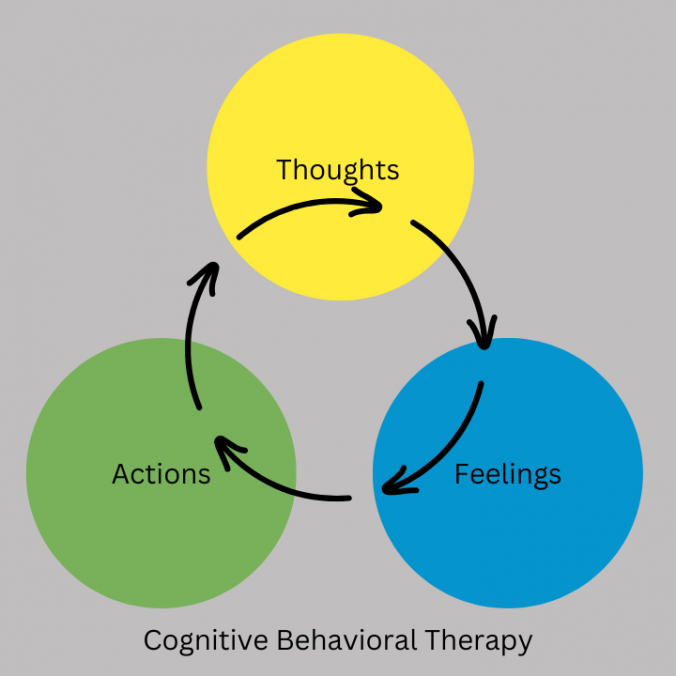Thanksgiving is a time of gratitude, family, and… stress? Let’s be honest—while the holiday season brings joy, it can also come with its own set of challenges. From dodging awkward family conversations to managing food hangovers, Thanksgiving can feel like a marathon instead of a holiday.
But fear not! Here’s a light-hearted, fun guide from a professional counselor on how to survive Thanksgiving with your sanity intact—while maybe even enjoying yourself along the way.
1. The “Turkey Timeout”
Let’s face it: Thanksgiving can be intense. Whether you’re hosting or just trying to navigate a house full of extended family, it’s important to have an escape plan. Enter: the Turkey Timeout.
This is your secret weapon—a quick five-minute break you can take when Uncle Joe starts his annual political rant or Aunt Marge corners you about your life choices. Slip away to a quiet room, the bathroom, or even the garage, take a few deep breaths, and regroup. The Turkey Timeout isn’t avoidance; it’s a self-care strategy!
2. Have a “Safe Word”
Get your immediate family or a close ally on board with a secret code—something like “cranberries” or “pumpkin pie disaster.” When things start to go off the rails, drop the word into a sentence like, “I think I forgot the cranberries!” to signal you need backup. It’s a great way to tag someone in or out of a conversation without making a scene.
3. Embrace the Art of the Non-Answer
Thanksgiving is prime time for invasive questions: “When are you getting married?” “Why don’t you have kids yet?” “Have you thought about a new job?” Instead of diving into a defensive answer, master the art of the non-answer. Here are some go-to phrases:
- “That’s a great question! I’ll let you know when I figure it out.”
- “Oh, you know, life’s been an adventure!”
- “I’m focusing on enjoying today; we’ll see what the future holds!”
These responses are polite, vague, and excellent at redirecting the conversation.
4. Play “Thanksgiving Bingo”
If your family gatherings are predictably unpredictable, why not make a game out of it? Create a Bingo card with classic Thanksgiving moments: “Someone brings up politics,” “The dog steals food,” “Grandma tells a story from 1962,” “The oven burns something,” and so on. Keep track throughout the day, and reward yourself with a special treat when you get Bingo. It’s a fun way to stay light-hearted even if chaos ensues.
5. Set Boundaries with a Smile
Boundaries are a hot topic in therapy, but during Thanksgiving, they need a little more finesse. Be prepared to say “no” when necessary, but add a smile to soften the delivery. A cheerful, “Oh, I’m taking a break from talking about that, but tell me about your latest adventure!” can keep the peace while still protecting your own limits.
Setting boundaries isn’t about being rigid; it’s about finding a balance between respecting others and taking care of yourself.
6. Choose Your Battles Wisely
Remember, not every hill is worth dying on—especially when the stuffing is calling. If a family debate is getting heated, ask yourself: “Is this worth engaging in, or will it just add to my stress?” Sometimes the best choice is to nod, smile, and pass the mashed potatoes instead of getting into a debate over who has the best sweet potato recipe.
7. Preempt the Post-Dinner Food Coma
Thanksgiving meals are notorious for being carb-heavy, delicious, and coma-inducing. If you want to enjoy the day without spending the evening on the couch in a food-induced haze, try eating mindfully. Savor each bite, take breaks between courses, and hydrate with water. Consider going for a short, post-dinner walk to get your energy back before the dessert table calls your name.
8. Create Your Own Traditions
Who says Thanksgiving traditions have to be traditional? If you dread certain parts of the holiday, why not start something new? Host a pre-dinner dance party, organize a family game, or take turns sharing a gratitude list (beyond just saying “I’m thankful for this food”). Injecting a little creativity can make the holiday feel fresh and fun.
9. Be the Chief of the Compliment Patrol
Thanksgiving can bring out the critic in all of us, whether it’s about someone’s cooking skills or that choice of centerpiece. Flip the script by becoming the compliment patrol. Notice the positives—the delicious pie, the well-set table, the effort someone put into a dish—and share them generously. Focusing on what’s good helps shift the energy and can lighten the mood.
10. Have an Exit Strategy
If all else fails, have a graceful exit strategy in place. Decide beforehand what your limit is for socializing, and stick to it. Whether it’s “I’ll stay until dessert” or “Once the second round of coffee is served, I’m out,” make your plan clear. It’s okay to prioritize your well-being, even during the holidays. When you’re ready to go, say your goodbyes warmly, make a quick round of hugs, and leave without lingering.
11. Find Moments of Gratitude, Even in the Chaos
No matter how stressful Thanksgiving can be, it’s still a day that invites gratitude. Take a moment in the midst of the hustle and bustle to find something you’re thankful for. It could be the food, the people around you (even the ones who drive you nuts), or simply the fact that you made it through another family gathering. Gratitude doesn’t have to be perfect—it just has to be genuine.
12. Don’t Forget the Power of Laughter
At the end of the day, Thanksgiving is about coming together, flaws and all. If things don’t go perfectly (spoiler: they won’t), find a way to laugh. Humor is one of the best ways to diffuse tension and connect with others. Whether it’s a kitchen disaster or a misheard family story, a little laughter can go a long way in transforming stress into joy.
Happy (and Sanity-Saving) Thanksgiving!
Surviving Thanksgiving doesn’t mean being perfect or making sure everything goes smoothly—it’s about embracing the chaos with a sense of humor, setting boundaries with kindness, and finding ways to take care of yourself amidst the hustle. Remember: You don’t have to love every moment of Thanksgiving to make it meaningful. Just do your best, take breaks when needed, and savor the moments that make you smile.
Have a happy, light-hearted, and fun Thanksgiving—may your stuffing be tasty, your family drama minimal, and your Turkey Timeouts short! 🍂🦃










